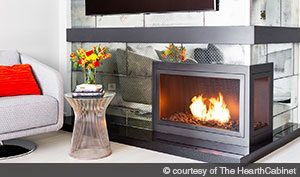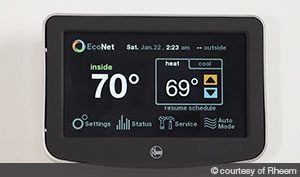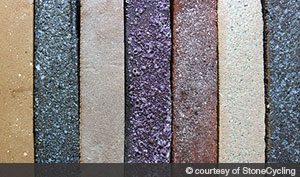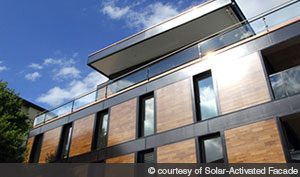As your clients return from summer vacations, they may be thinking of upgrades they’d like to make to their homes. These days the goal often is to decrease maintenance costs, lower utility bills, and appeal to a wide segment of future buyers. Here are nine cutting-edge developments—some of which are just now being introduced into U.S. markets—that piqued our interest, along with reasons why they’re a wise investment.
Permeable Pavers

Example: The “Eco” line from EP Henry comes in a number of shapes, sizes, textures, and colors and can pave driveways, walkways, pool decks, and retaining walls. Many local governments and municipalities offer storm water management tax credits for upgrades like these, and some permeable pavers can help homes qualify for LEED certification.
Green Roof Tiles

Example: Ondura’s Onduvilla line is made from 50 percent post-consumer reused materials that are lightweight — aiding both transporting and installing — and comes in varied landscape-inspired colors (including red, green, sienna brown, terra-cotta, gray, and black). The tiles can be added over an existing asphalt shingle layer, which eliminates the cost and labor to remove the original layer.
Cartridge-Fueled Fireplaces

Example: The HearthCabinet‘s model uses disposable cartridges that come unscented or in vanilla, pine, or cinnamon fragrances. Many of its models have a modern hipness and can sit directly on the floor, atop a low console, or in a wall. Some models also can be used outdoors. Prices may seem steep at $4,900 to $12,000, but they require no design time, chimney work, or gas line, so the expense is all on the front end.
Modular, Portable Shelving

Example: Designers Jack Godrey Wood and Tom Ballhatchet developed their BUILD shelving modules to offer expansion options. Manufactured by German-based Movisi from plastic foam that’s recyclable, hypoallergenic, and water- and shock-resistant, the modules can be arranged in numerous configurations on floors or walls. The system comes in black or white and can be used with or without a back.
Tankless Water Heater
Why it’s a smart choice: A traditional water heater keeps its tank hot all day, increasing utility bills. Tankless designs that attach to a plumbing system work on demand, heating water only when needed and paring energy consumption.
Example: Rinnai says its Continuum model is 50 to 70 percent more efficient than most traditional heaters. One version allows home owners to preset shower temperature and times and automatically fill tubs. While this type of tank is more expensive to purchase and install, it offers a good payback, especially for those who own vacation homes and don’t want to heat water when away. The key is to pick a model with a flow rate that matches the home’s number of fixtures and average water usage. Using gas rather than electricity makes sense too, avoiding problems when there’s a power outage.
Master Smart Control System

Example: Rheem’s EcoNet technology uses a home’s Wi-Fi connection to link its air conditioning, heating, and water management products so that a home owner can control them through a single app or wall-mounted panel. The system can send alerts if anything’s wrong, such as a water leak. If the home owner has set up contact information, the system will even send these alerts directly to their contractor. However, this setup works best with new construction, major remodeling, and intensive retrofits.
Recycled Building “Brick”

Example: StoneCycling — a company founded in the Netherlands in 2013 by Tom van Soest and Ward Massa — grinds and blends broken brick and other waste materials and processes them into durable multicolored shapes and sizes for aesthetically appealing interior and exterior applications. The new products can withstand high winds and are flame-retardant. The company is currently working with interior architects in several U.S. cities and Massa says they expect multiple projects that incorporate them to be finished next year.
Solar Facade

Example: Architect and energy expert Eric Nelson of Nelson Architech GmbH and Boston-area architect Stephen Moore of BlankSlate Design hope to begin manufacturing the SAF system in the United States in the coming year. It’s already being used effectively in Switzerland and other countries around the world.
Seaweed Recycled Insulation
Why it’s a smart choice: Building scientists always seem to be on the prowl for more energy-efficient insulation. Using seaweed — a renewable resource that’s considered a nuisance and eyesore when it washes up on beaches — is a win in terms of being recyclable, and providing a tight envelope for various parts of a home’s construction.
Example: The Fraunhofer Institute for Chemical Technology in Munich, Germany, is working with NeptuTherm e.K. on a project to convert “Neptune grass,” a seaweed that litters beaches along the Mediterranean, into roof, wall, and ceiling insulation. Its application has proved to work well as an acoustic barrier that’s also mold resistant, nonflammable, and a better insulator than comparable wood-based products. Wired magazine writer Joseph Flaherty recently touted it as “the world’s coziest sushi roll. “



